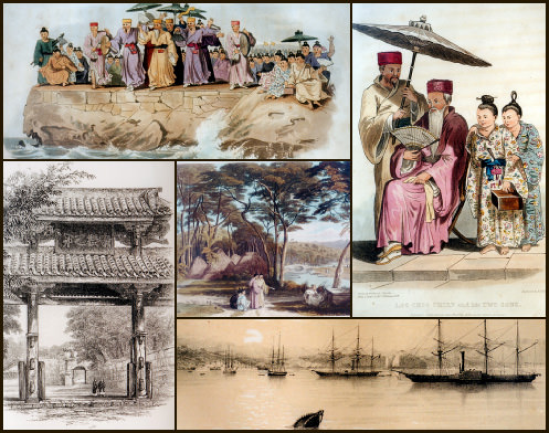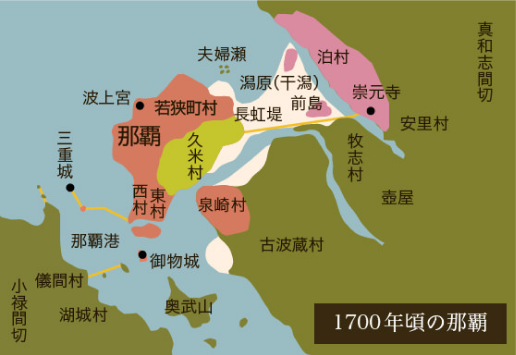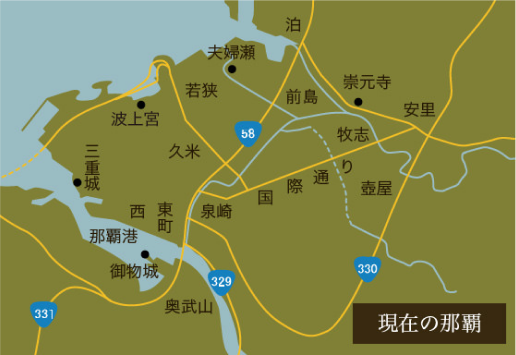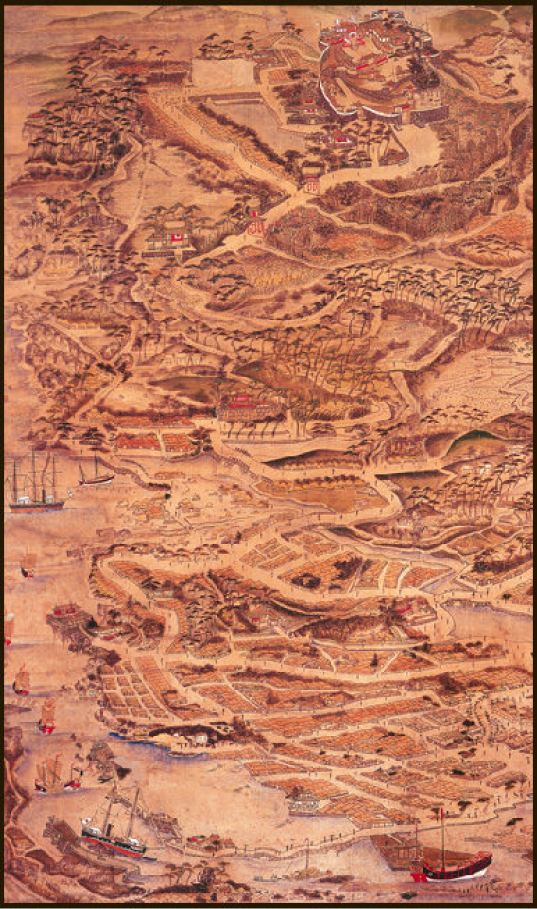01.Ryukyu Kingdom
Okinawa prefecture used to be called Ryukyu Kingdom and formed an individual nation that has king at the top.
In 1187, Shunten Dynasty has started, and Eiso Dynasty and Satto Dynasty took over that. The king Satto sent TAIKI and gave gifts in accordance with invitation from China. Derived from this, SAPPU system has launched, that is composed of SHINKO, surrounding countries give gifts to China and receive imperial gifts, and SAPPU, Chinese emperors give approval to surrounding countries’ sovereigns as the king.
Ryukyu had been divided into Hokuzan power, Chuzan power and Nanzan power at that time, however, Sho Hashi who is the king of the First Sho Dynasty subverted them and accomplished unification of the three powers. Whereafter, in 1470, Kanamaru who is from Izena Island took over the throne and renamed Sho En. That is the beginning of the Second Sho Dynasty.
From 14th century through 16th century, Ryukyu has intermediate traded with China, Japan, Korea and South East Asian countries and had been flourished. Afterward, this was called “Great Trading Age” and the state of this flourished era is written on “BANKOKUSHINRYO NO KANE.”
However in 1609, Satsuma-han has invaded Ryukyu with 3,000 soldiers. Since then, Ryukyu has integrated into Japan's shogunate regime, meanwhile they still had relationship with China and had kept kingdom regime under diplomatic relationship between Japan and China.

02.Shuri/Naha in Ryukyu Kingodm period
Various cultures had been circulating within Ryukyu which were active among Asian countries as a trading nation. As a result of that, unique culture which is strongly influenced by China and Japan has created. The center of that is Shuri and Naha which are current Naha City.
Current Naha City consists of 4 regions such as Shuri, Naha, Mawashi and Oroku which have different aspects.
Shuri used to be an imperial city which surrounds a castle, SHURI-JO and had been a center of the nation’s politics and culture.
Naha has developed since it has Naha Port. Tomari Village which has Tomari Port and Kume Village where a number of Chinese descendents had lived are located right next to Naha of the time.
In addition, Naha used to be a separated island, called “UKISHIMA” and connected to opposite shore by CHOKOTEI (about 1 km length undersea road) which had built in 1451.
On the other hand, Mawashi and Oroku areas (called Mawashi-magiri and Oroku-magiri at that time) contributed to city life of Naha and Shuri as suburban farming villages.



03.Start of Okinawa Prefecture
In 1872, Meiji government forcibly placed "Ryukyu-han" instead of the kingdom, army force and police were sent to Ryukyu and has launched Okinawa Prefecture in 1879 (Disinstallation of Ryukyu).
At that time, the prefectural government was placed in Naha and that made Naha the center of politics and economies. In addition, in May 20, 1921, municipalization was implemented in Naha area and Shuri area. That was the first time that "City" was made in Okinawa Prefecture.
However, 90% of Naha City area was destroyed by the U.S. military's "10.10 Aerial Attack" in 1944 and a lot of lives and cultural heritages were lost by the ground battle between Japanese and U.S. military.
Postwar Okinawa had been put under the rule of the U.S. military and some U.S. military-related facilities were built in Naha City such as the Naha Military Port on forcibly expropriated lands.
Naha City has merged with Shuri City and Oroku Village in 1954, and with Mawashi City in 1957, and formed current Naha City area.
After 27 years of U.S. military ruling era, on May 15, 1972 the administrative right of Okinawa has given back to Japan, and neo-Okinawa prefecture has launched (Reversion to Japan). However it was a reversion with some issues such as concern about U.S. military bases located here and it is still remaining as the big problem.
G8 Kyushu Okinawa Summit has taken place in 2000, and also some historic sites in the city such as SHURI-JYO site, SHIKINAEN, SONOHYAN-TAKI ISHIMON, TAMAUDUN ROYAL was registered to UNESCO World Heritage Sites. In doing so, Okinawa is increasingly introduced to the world.
Naha city has been a front stage of Okinawa and Ryukyu's history in a long history. Even now, it still keeps developing as majestic capital city of Okinawa which hands down its history and culture.





